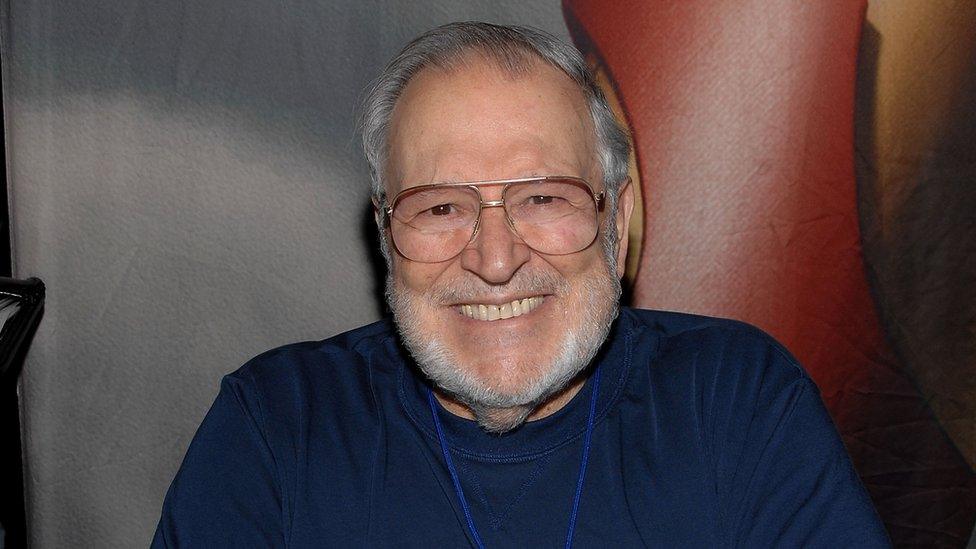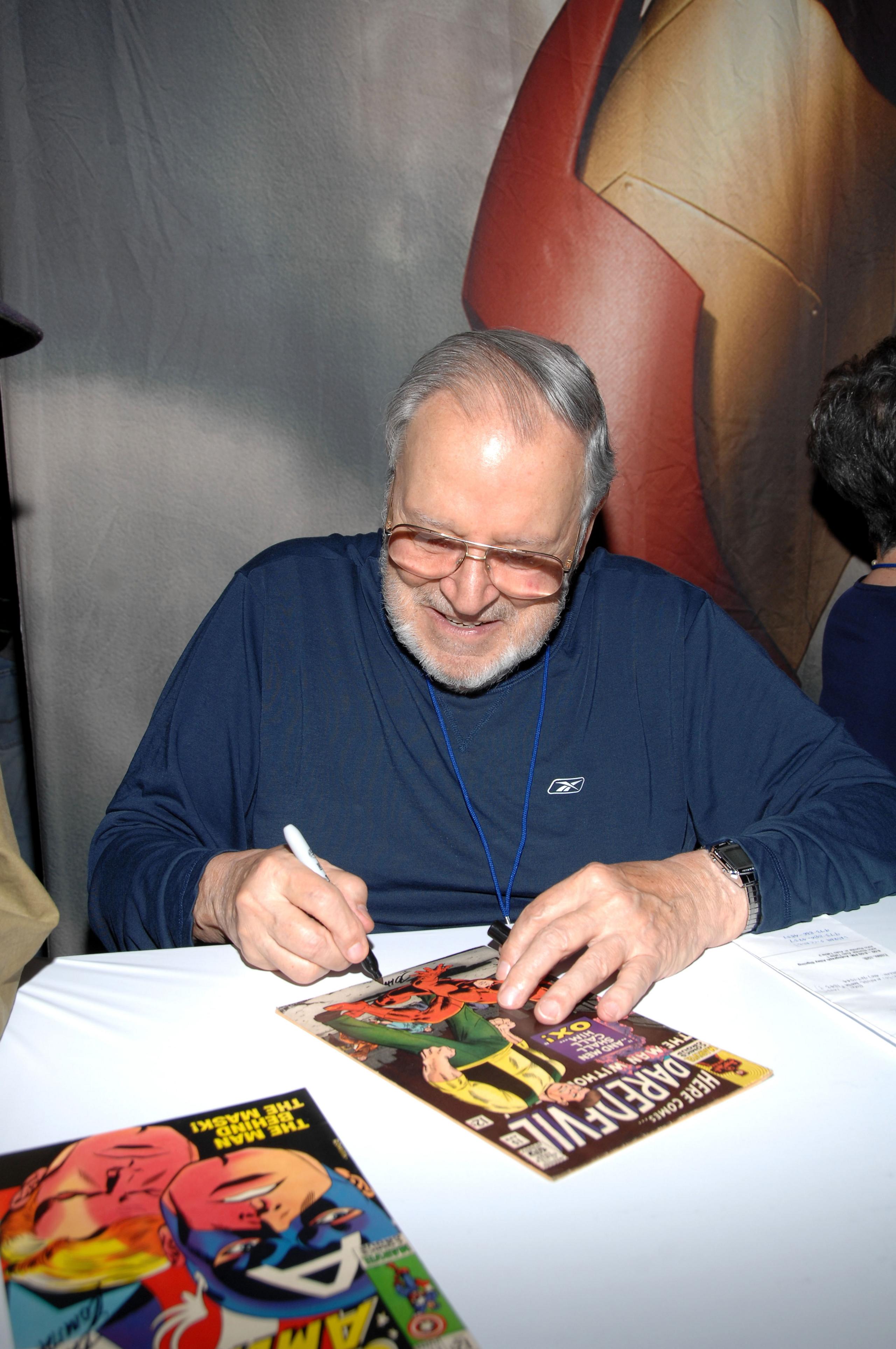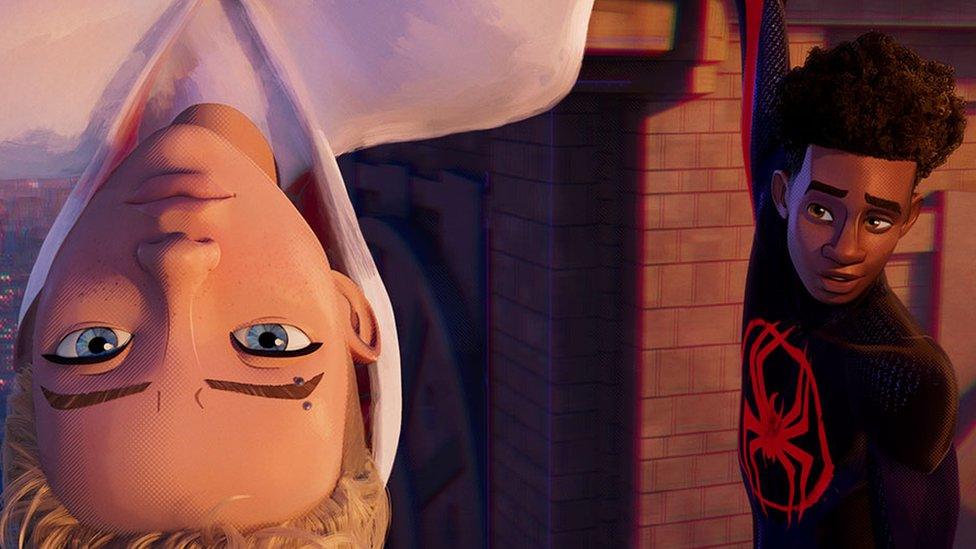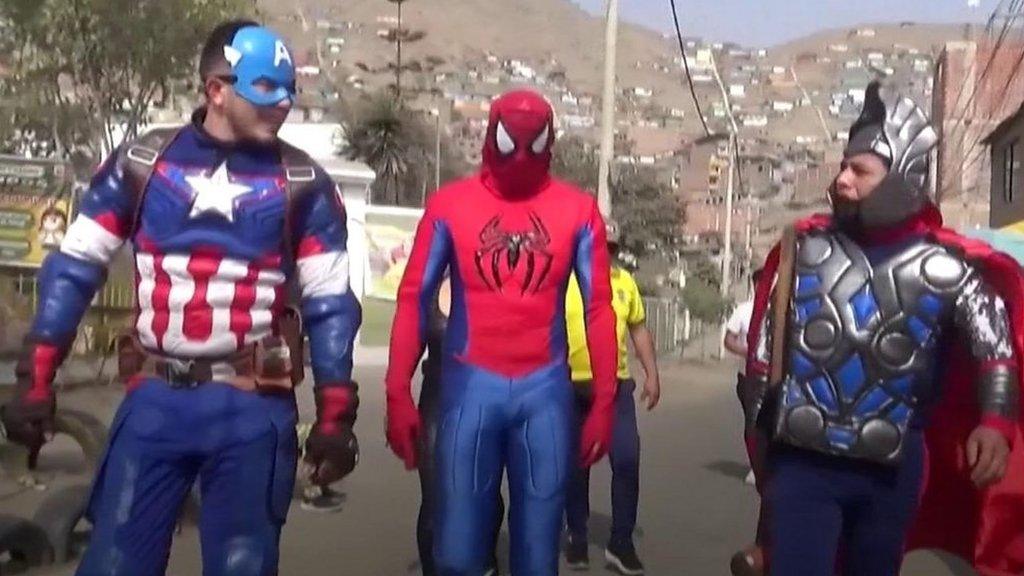John Romita Sr: James Gunn leads tributes to 'great' Marvel Comics artist
- Published

John Romita worked on many Spider-Man projects for Marvel, as well as a Superman cover for DC
Marvel Comics artist John Romita Sr, who helped to create characters such as Wolverine, Spider-Man's girlfriend Mary Jane Watson and his adversary Punisher, has died at the age of 93.
Broadcaster and comics fan Jonathan Ross called him a "kind, generous, compassionate and thoughtful man".
"Thank you John for sharing your magnificent genius," he wrote, external.
Guardians of the Galaxy writer and director James Gunn also paid tribute, external to the "great comic book artist".
Gunn, now DC Studios boss, revealed that Romita had encouraged him as a child. "My brother and I wrote [to] Mr Romita when we were young kids and sent him drawings of superheroes we were working on," he wrote.
"He wrote us back, telling us what he liked about the drawings! A truly memorable experience in my life, making me feel like the magic of comic books, which seemed so otherworldly, wasn't actually that far away."
'Powerhouse of ideas'
Paying his respects, Ross posted that it was a "sad, sad day for those of us who grew up adoring and obsessing over Marvel comics".
"He was the rock that provided a gloriously rendered foundation to Marvel in those years when it grew and prospered and became the powerhouse of ideas it is today," he wrote.
Romita's death was announced on Tuesday by his son and fellow comics artist John Romita Jr, who confirmed his father had died "peacefully in his sleep".
Romita Jr said he was "a legend in the art world and it would be my honour to follow in his footsteps".
Allow X content?
This article contains content provided by X. We ask for your permission before anything is loaded, as they may be using cookies and other technologies. You may want to read X’s cookie policy, external and privacy policy, external before accepting. To view this content choose ‘accept and continue’.
Born in Brooklyn, New York, Romita Sr graduated from Manhattan's School of Industrial Art in 1947 and served in the army before starting working in comics.
He gained a reputation working on titles for companies would become Marvel and DC - Timely Comics and National Comics.
From 1966 he worked with Marvel editor-in-chief Stan Lee on The Amazing Spider-Man, replacing original artist Steve Ditko, while helping it to become the company's top-seller.
His tenure saw the introduction of Spider-Man's love interest Mary Jane Watson and his adversary Punisher, the assassin; as well as the crime boss Kingpin.

Many of his famous characters have gone on to appear in countless TV shows and films
In the early 1970s, Romita became Marvel's art director - a role he would serve in for more than two decades - contributing to the design of characters including Wolverine, who first appeared in an Incredible Hulk publication.
He also helped to come up with Luke Cage, one of the earliest black superheroes to feature in a Marvel comic book.
Other enduring Spider-Man characters he was involved in originating included the villainous Vulture, mobster Hammerhead and the sonic-powered Shocker, as well as the Hobgoblin, journalist Robbie Robertson and Gwen Stacy's father George Stacy.
'I can make it better'
He completed artwork for a number of classic titles including The Night Gwen Stacy Died, from 1973; and the wedding of Spider-Man's alter-ego Peter Parker and Mary Jane in 1987.
Romita semi-retired in 1996 but continued to work on Spider-Man projects for Marvel as well as a Superman cover for DC.
Many of his famous characters have gone on to appear in TV shows and films, both live-action and animated, and his death comes the week after Sony's Spider-Man sequel, Across the Spider-Verse proved to be a box office success.
"No matter what success I've had, I've always considered myself a guy who can improve on somebody else's concepts," he said in a 2002 interview. "A writer and another artist can create something, and I can make it better."
The same year, the artist was inducted into the Eisner Awards Hall of Fame, and later the Inkwell Awards Hall of Fame in 2020.
Related topics
- Published2 June 2023

- Published7 June 2023

- Published2 November 2022

- Published14 December 2021
